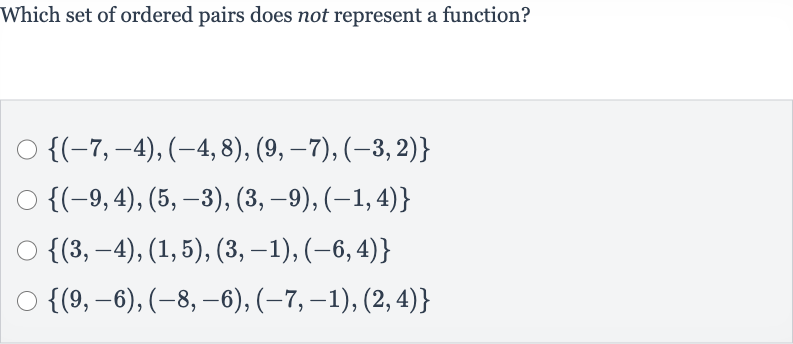Full solution
Q. Which set of ordered pairs does not represent a function?
- Define function as relation: A function is defined as a relation where each input ( extit{x}-value) has exactly one output ( extit{y}-value). To determine which set of ordered pairs does not represent a function, we need to check if there are any repeated extit{x}-values with different extit{y}-values in each set.
- Check first set: Check the first set for any repeated -values with different -values.There are no repeated -values in this set, so this set represents a function.
- Check second set: Check the second set for any repeated -values with different -values.There are no repeated -values in this set, so this set represents a function.
- Check third set: Check the third set for any repeated -values with different -values.The -value appears twice with different -values ( and ), so this set does not represent a function.
- Check fourth set: Check the fourth set for any repeated -values with different -values.There are no repeated -values in this set, so this set represents a function.
More problems from Write a quadratic function from its x-intercepts and another point
QuestionGet tutor help
QuestionGet tutor help
QuestionGet tutor help
QuestionGet tutor help
QuestionGet tutor help
QuestionGet tutor help
QuestionGet tutor help
QuestionGet tutor help

